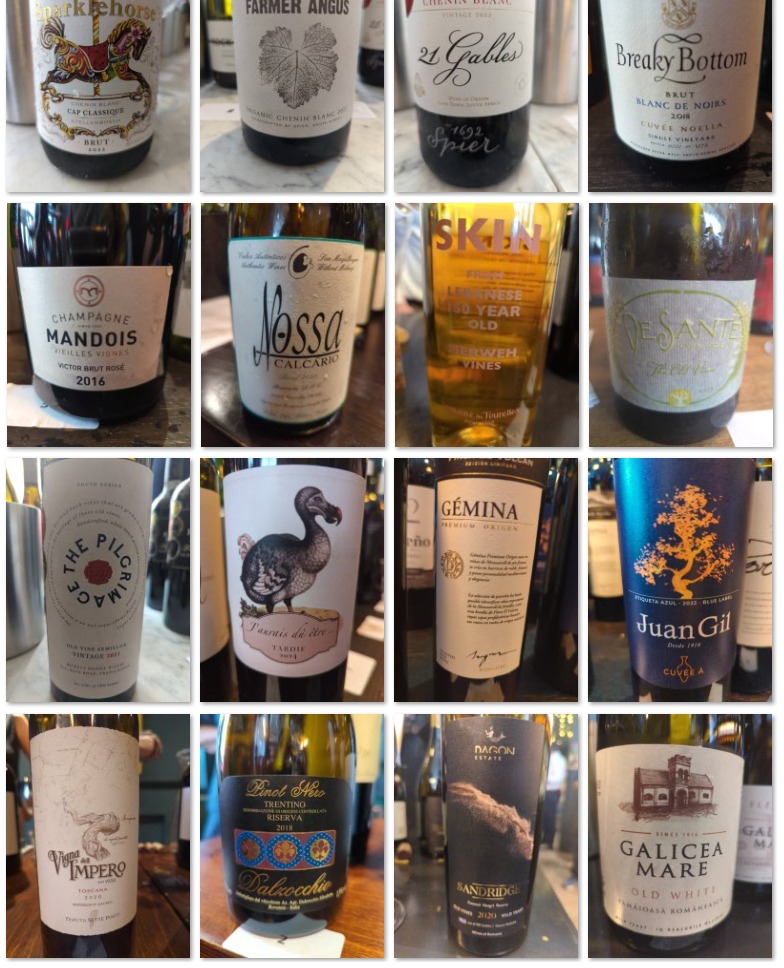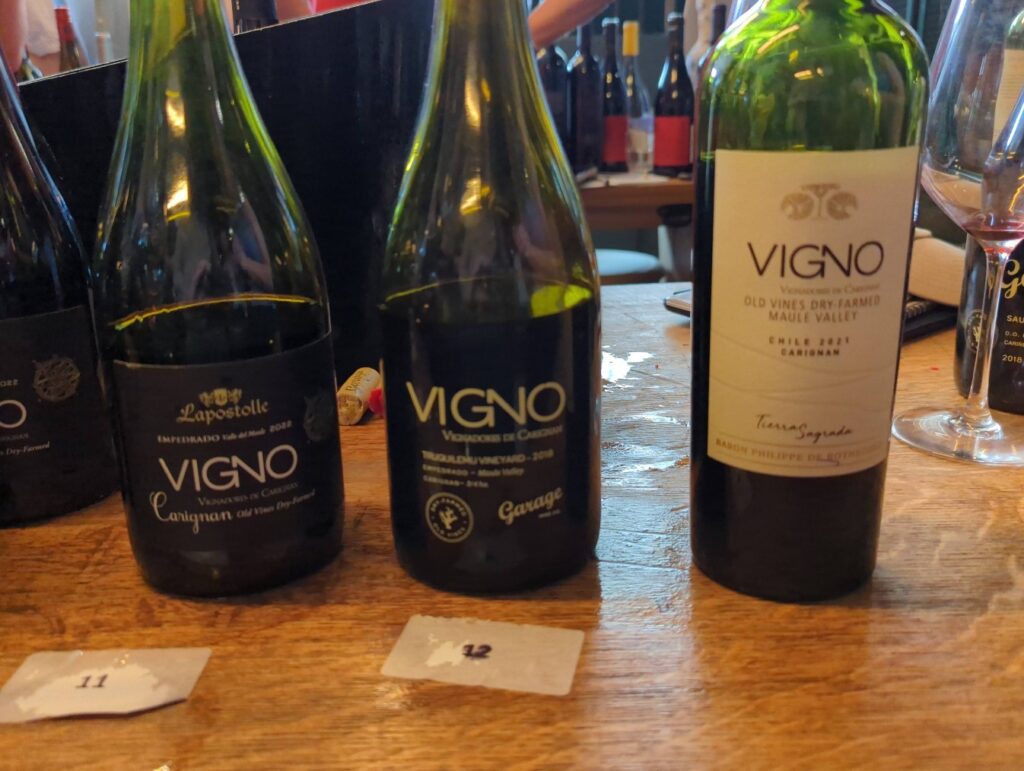
In mid-June 2025, I attended the Old Vine Conference trade and media wine tasting in London. The Old Vine Conference works to raise awareness, deepen understanding and build support for the global old vine movement. It champions the development of a recognised global category for wines made from old vines, lending structure and momentum to what is sometimes an underappreciated sector.
This year’s event was billed as one of the most extensive tastings of old vine wines worldwide, with representation from a remarkable array of countries including France, Spain, Portugal, Italy, Austria, Germany, Bulgaria, Romania, Turkey, Lebanon, Bolivia, Argentina, Chile, Australia, Canada, the USA and South Africa.
Over 150 wines were shown, with contributions from both importers and producers themselves. Particularly noteworthy was the inclusion of a quasi-appellation organisation, which I’ll touch on later. The overall quality was very high, with an exceptional number of standout wines. What follows is a selection of those I personally liked the best:

Sparkling, White and Orange Wines
Sparklehorse Chenin Blanc Cap Classique Brut 2022 from Breedekloof, South Africa (£26.50) is made entirely from Chenin Blanc grown on 50-year-old vines. With 12.5% ABV, it offers crisp notes of apple and pear with an appealing texture. Distributed by Enotria & Coe, it is available from Frontier Fine Wines and the Great Wine Company.
Spier’s Farmer Angus Chenin Blanc 2022 from Stellenbosch, South Africa, is another single-varietal Chenin Blanc, with fruit drawn from 42-year-old vines. At 13.3% ABV, it is fresh and bright, showing flavours of apricot, lemon and pineapple. Priced at £39, it’s available from RAKQ.
21 Gables Chenin Blanc 2022, this time from Cape Town. Also from Spier, with the same vine age but a more generous 14.5% ABV, this wine is fuller in style, showing rich apricot, tropical fruit and pear drop character, with a touch of oak influence. Available for £25 from The Savanna.
Breaky Bottom’s Cuvée Noella Brut Blanc de Noirs 2018, from Sussex, England, is made from 75% Pinot Noir and 25% Pinot Meunier. With 11.9% ABV and vines aged around 35 years, it features classic brioche alongside deep apple flavours and a hint of sweetness. Awarded 94 points (silver) at IWSC 2025. £234 (!) from the producer.
Champagne Mandois Victor Rosé Brut 2016 is from France and composed of 90% Chardonnay and 10% Pinot Meunier. With a 12.5% ABV and 35-year-old vines, this rosé is elegant and leans more towards a fine white Champagne style, avoiding overt red fruit tones. It received 91 points (silver) at IWSC 2025 and is priced at £60 from ND John Wines.
Filipa Pato & William Wouters’ Nossa Calcário Bical 2023, from DOC Bairrada in Portugal, is 100% Bical from vines aged between 40 and 60 years. At 12% ABV, it is expressive with a fine texture. Available for £32 from Clark Foster Wines.
Domaine des Tourelles Skin 2023, from Bekaa Valley in Lebanon, is an orange wine made from 100% Merweh, some of the vines over 100 years old. With 11% ABV, it shows intense citrus and cooked pear notes without being overly tannic. Distributed by Boutinot, £22.
DeSante Old Vines Napa Valley 2019 is a white field blend from the USA made with Sauvignon Vert, Semillon, Golden Chasselas, Green Hungarian and other varieties. The vines are between 70 and 90 years old, and the wine (13% ABV) is richly flavoured, with notes reminiscent of apple tarte tatin. Available for £33 from Alley Wines.
Rickety Bridge Estate’s The Pilgrimage Old Vine Semillon 2021 comes from Franschhoek, South Africa. At 11.5% ABV and made from 120-year-old vines, it offers citrus, floral and gently spicy notes with a long finish. This wine is seeking representation in the UK.
Mosia Galicea Mare Elegance Feteasca Neagra 2018, from Romania, is 100% Feteasca Neagra made from vines over 70 years old. At 16% ABV, it is aromatic and flavourful, with a character that resembles a more restrained Gewürztraminer. Distributed by Roexport Ltd.
Red Wines
Plaimont Producteurs Tardif 2024 is made from 100% Tardif from Gascony, France. With an ABV of 12% and vines believed to be 215 years old, this wine was born from a rediscovered variety, reflected in its Dodo label. It delivers intense black fruit notes, including blackberry and blackcurrant. Seeking representation in the UK.
Finca el Volcán Gémina 2019 from Jumilla, Spain, is a 100% Monastrell with 15% ABV and 35-year-old vines. It features dark fruit, liquorice and mineral notes. Also seeking representation in the UK.
Bodegas Hijos de Juan Gil’s Blue Label Cuvée A 2022, from Jumilla, is another Monastrell-based wine (100%), with a powerful 15.5% ABV. This bottling is aromatic, rich and opulent, with flavours of mocha, cherry, plum and chocolate. Distributed by Boutinot at £39.
Tenuta Sette Ponti’s Vigna dell’Impero 2020, from Tuscany, Italy, is a 100% Sangiovese wine produced from 90-year-old vines. It carries an ABV of 14% and delivers concentrated plum, black raspberry and mocha flavours. Distributed by Latimer Vintners at £75.
Dalzocchio Pinot Nero Riserva 2018, from Trentino in northern Italy, is made entirely from Pinot Noir. With a 13% ABV, this wine stands out for its savoury and spiced character. It is currently seeking UK representation.
Dagon Estate’s Sandridge 2020 from Dealu Mare in Romania is 100% Feteasca Neagra. With 14.5% ABV and 45-year-old vines, it is deeply aromatic, with pronounced dark fruit and cocoa notes. Available from Vagabond Wines at £25.

One particularly interesting discovery was Vigno, a brand/association founded by 17 growers from Maule, Chile. Their aim was to establish their own appellation for Carignan to create a distinct identity for wines from this variety and region. I was especially taken by the following:
Vigno by Lapostolle 2022 comes from Empedrado in the Maule Valley, Chile. Made entirely from Carignan grown on 90-year-old vines, this wine sits at 14% ABV and offers a vibrant, fruit-driven take on the variety. It’s available from Just In Cases and VINVM, priced around £75.
Baron Philippe de Rothschild’s Tierra Sagrada Vigno Carignan 2021 also originates from the Maule Valley and is made from Carignan grown on vines over 30 years old. At 13.5% ABV, it presents a more oak-influenced expression of the grape. This wine is currently seeking representation in the UK.
Overall, it was an impressive and wide-ranging showing of old vine wines. I had previously associated the category mostly with reds, but this tasting challenged that assumption. Some of the most exciting whites came from South Africa, proving that old vine whites can be just as compelling and ageworthy as their red counterparts.













